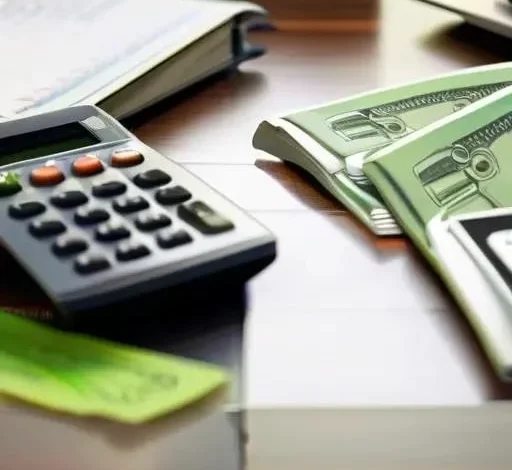Financial Preparedness: Building Resilience for Disaster Recovery
Disaster preparedness transcends simply stockpiling bottled water and first-aid kits; it requires a robust understanding and implementation of sound financial strategies. Ignoring the financial aspects of disaster preparedness leaves individuals, families, and even entire communities vulnerable to long-term hardship. Effectively managing your finances before a crisis hits is crucial to weathering the storm, enabling you to rebuild and recover with greater resilience. Therefore, a proactive approach to finance is just as critical as any physical preparation when facing potential disasters.
The Hidden Costs of Disaster
When we think about disasters, images of immediate physical devastation often spring to mind. However, the long-term economic fallout is frequently overlooked. Consider these potential costs:
- Property Damage and Loss: Repairing or replacing damaged homes, vehicles, and personal belongings.
- Medical Expenses: Treatment for injuries sustained during the disaster.
- Lost Income: Inability to work due to displacement, business closures, or infrastructure damage.
- Relocation Costs: Temporary or permanent housing expenses if your home is uninhabitable.
- Increased Living Expenses: Higher prices for essential goods and services due to scarcity.
Building a Financial Resilience Plan
A comprehensive disaster preparedness plan should explicitly address financial considerations. Here are some key elements to incorporate:
Emergency Savings Fund
Having a readily accessible emergency fund is paramount. Aim to save at least 3-6 months’ worth of living expenses in a high-yield savings account or other easily liquid asset. This fund provides a buffer to cover unexpected costs and lost income during a disaster.
Insurance Review
Regularly review your insurance policies (homeowners, renters, auto, health) to ensure they adequately cover potential disaster-related losses. Understand your policy limits, deductibles, and exclusions. Consider supplemental insurance, such as flood insurance, if you live in a high-risk area.
Document Protection
Safeguard important financial documents, such as insurance policies, bank statements, tax returns, and identification. Store physical copies in a waterproof container and create digital backups in a secure cloud storage service. Consider keeping copies at a separate location, such as a safe deposit box or with a trusted family member.
Debt Management
Prioritize paying down high-interest debt, such as credit card balances, to reduce your financial burden in the event of a disaster. Explore options for debt consolidation or refinancing to lower your monthly payments.
Long-Term Financial Recovery
Recovering financially from a disaster can be a lengthy process. Here are some strategies to consider:
- Assess Your Financial Situation: Take stock of your assets, debts, and income to develop a realistic recovery plan.
- Seek Financial Assistance: Explore available resources, such as disaster relief grants, loans, and unemployment benefits.
- Create a Budget: Track your expenses and prioritize essential needs.
- Consider Government Assistance: DisasterAssistance.gov can connect you with various forms of assistance.
Furthermore, consider the psychological impact of financial strain following a disaster. The stress of rebuilding a life while simultaneously grappling with financial worries can take a significant toll on mental well-being. A solid financial foundation provides a sense of security and control, empowering individuals to cope with the emotional challenges of recovery more effectively. It allows them to focus on the immediate needs of themselves and their families without the added burden of overwhelming financial uncertainty. This peace of mind is an invaluable asset in navigating the aftermath of any disaster, regardless of its scale.
Leveraging Technology for Financial Preparedness
In today’s digital age, technology offers powerful tools for enhancing financial preparedness. Consider utilizing these resources:
Mobile Banking and Payment Apps
Ensure you have access to your bank accounts and payment methods through mobile apps. This allows you to manage your finances, transfer funds, and make payments even if physical banking locations are inaccessible.
Budgeting and Financial Tracking Software
Utilize budgeting apps or software to track your income, expenses, and savings goals. This provides a clear picture of your financial situation and helps you identify areas where you can save money for your emergency fund.
Digital Document Storage
As mentioned previously, digital document storage is crucial. However, go beyond simply storing copies of your documents. Organize them logically and ensure they are easily accessible in a crisis. Consider using password-protected cloud storage services for added security.
Communication Tools
Maintain reliable communication channels with your bank, insurance providers, and financial advisors. Ensure they have your updated contact information and that you can reach them in case of an emergency. Utilizing secure messaging apps can facilitate communication even when phone lines are down.
Beyond Individual Preparedness: Community-Level Financial Resilience
While individual financial preparedness is vital, community-level resilience is equally important. Local governments and organizations can play a significant role in fostering financial stability within their communities by implementing programs that promote financial literacy, provide access to affordable financial services, and offer disaster relief assistance.
Encouraging small businesses to develop business continuity plans that address financial risks is also crucial. Small businesses are often the backbone of local economies, and their ability to recover quickly after a disaster can significantly impact the community’s overall economic recovery. Furthermore, promoting community-supported agriculture (CSA) programs and local food banks can enhance food security and reduce reliance on external supply chains during emergencies.
Ultimately, a comprehensive approach to disaster preparedness requires a collaborative effort between individuals, families, businesses, and communities. By prioritizing financial resilience alongside physical preparedness, we can create a more secure and sustainable future for all.

